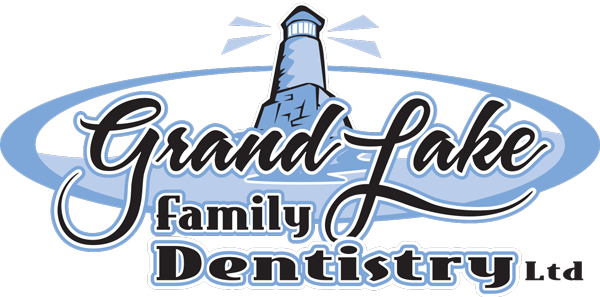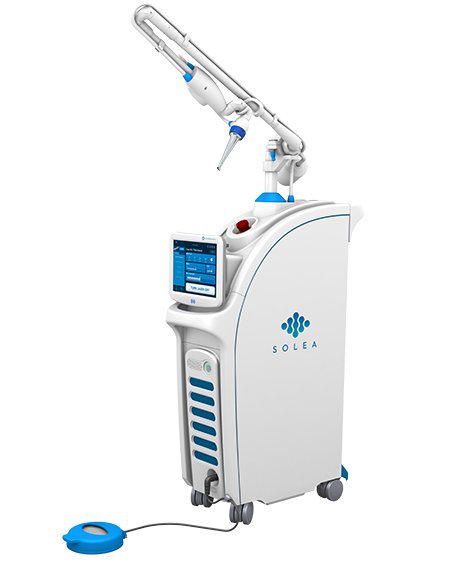Laser Dentistry Procedures in Celina and St. Marys, OH
In recent years, laser dentistry has superseded many traditional practices, making treatments more precise and less painful. At Grand Lake Family Dentistry, we use this newer style of dentistry, which utilizes intense beams of light projected by a dental laser. Dental lasers can be used to perform a wide variety of treatments, including soft tissue shaping and removal.
The FDA deemed laser dentistry safe for public use in 1990. Since then, many dentists have incorporated dental lasers into everyday procedures, reducing bleeding, anxiety, and post-treatment recovery times. The beauty of dental lasers is that they damage far less of the surrounding tissue than traditional techniques, which means less discomfort and pain.
Here Are Some of the Other Benefits Associated With Laser Dentistry:
- Faster Healing and Tissue Regeneration
- Preservation of More of the Natural Tooth
- Reduced Bleeding During and After Treatment
- Reduced Need for Anesthesia
- Reduced Need for Stitches and Sutures
- Reduced Risk of Bacterial Infections After Procedures
How Can Laser Dentistry Help Me?
Laser dentistry is incredibly versatile and plays an important role in a growing number of common dental procedures. Laser dentistry is most notably associated with cosmetic treatments, but it is equally effective for preventative purposes.
Here are some of the ways that dental lasers can be used:
- Tooth Preparation—Prior to laser dentistry, a drill was required to prepare the tooth for a filling. Lasers can now completely eliminate the need for drilling and anesthesia. They also successfully kill oral bacteria around the surgical site.
- Reshaping Soft Tissue – Dental lasers can dissolve soft tissue to expose more of the natural tooth (crown lengthening), reshape soft tissue to make “gummy smiles” more attractive, and remove uncomfortable soft tissue folds caused by denture wear.
- Frenectomy – Lasers can improve speech and the feeding habits of babies, children, and adults by untying the tongue.
- Tumor Removal – When benign tumors have formed in the soft tissue areas of the mouth, a dental laser can completely remove them without causing pain.
- Whitening – Lasers can greatly expedite the tooth whitening process by increasing the activity of the particles in the peroxide bleaching solution.
- Biopsy – Lasers are sometimes used to perform a biopsy on suspicious areas of soft tissue. This biopsy procedure can be performed instantly and with great precision.
How Are Laser Procedures Performed?
Different types of dental lasers have been created to treat different conditions. Each laser uses a different wavelength of light, which predicates its best use. The most common types of dental lasers are carbon dioxide lasers and diode lasers, which are usually employed to treat soft tissue problems. The dentist will decide which type of laser is best to use after conducting X-rays and a thorough examination.
The laser beam is extremely bright, and special glasses will be provided to protect the eyes. The dentist will then direct the beam at the affected area and carefully dissolve the soft tissue, harden the filling, or whiten the teeth.
The procedure will take far less time than conventional methods and cause far less anxiety and discomfort. The only real disadvantage of laser dentistry is that it can prove to be more expensive.
If you have questions or concerns about laser dentistry, please ask your dentist.
Solea®
Laser dentistry utilizes sophisticated tools to create treatment experiences that are more comfortable and more efficient. With laser treatment, dentists can precisely treat soft tissue problems, contour gum lines, or even prepare teeth for restorations by targeting hard tissue.
Dental laser technology is constantly evolving, providing dentists with better ways to promote healthy smiles and treat a growing number of oral health issues with less hassle and discomfort. Varying dental lasers use water and laser power or a specific wavelength of light that is calibrated to affect only certain tissues.
What Makes Solea® Different?
With the variety of dental lasers on the market, many dentists choose lasers that only target soft tissue or hard tissue, depending on the dental issues they most commonly treat at their practices. There are even some lasers that can be adjusted to affect both hard and soft tissue for comprehensive care.
Solea®, owned by Convergent Dental, is made to treat dental enamel, soft tissue, and even bone without making adjustments to laser wavelengths. As an isotropic CO2 laser, Solea® is different from typical carbon dioxide lasers that are used just to treat gums or dental lasers that are meant to remove decayed dental enamel. Solea® is the first laser of its kind to be approved by the FDA for such a wide variety of applications.
Ask for Solea® Laser Dentistry at your Next Appointment
Solea® proves highly beneficial and useful in a number of treatment applications, such as deep cleanings to reverse symptoms of periodontal disease, gum shaping, soft tissue grafting, removal of decayed enamel, preparation for placement of prosthetics including crowns, bridges, and onlays, or even removing an old prosthetic before a new one can be provided.
With this advanced laser technology, patients can enjoy:
- Reduced Bleeding
- Maximized Comfort
- Faster Appointments
- Less Need for Local Anesthetic – No Injections!
- Multiple-Phase Treatment in One Sitting
- Dentists can treat soft tissue, teeth, and bone with one tool
- Minimized Need for Specialty Referrals
Solea® is specifically engineered to work faster and more efficiently through computer technology so dentists can better control the treatment process, and patients benefit from spending less time sitting in the dental chair.
To Learn More About Solea® Laser Dentistry, Contact Our Office
Take the first step toward a confident smile—schedule your consultation today!

